11 Kitchen Tools That Support Health Cooking
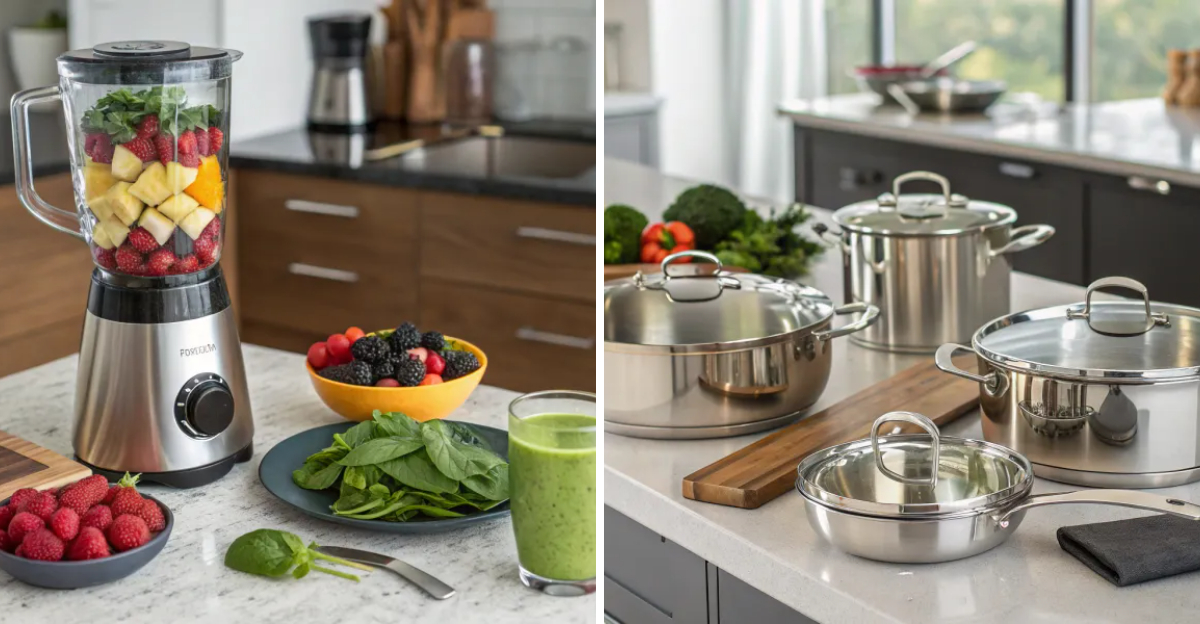
Cooking nutritious meals at home becomes much easier when you have the right tools in your kitchen. The proper equipment can help you prepare fresh ingredients quickly, preserve nutrients, and make healthy choices more convenient. With these essential tools, you’ll find yourself reaching for wholesome ingredients more often and enjoying the process of making balanced meals for yourself and your family.
1. Stainless Steel Cookware
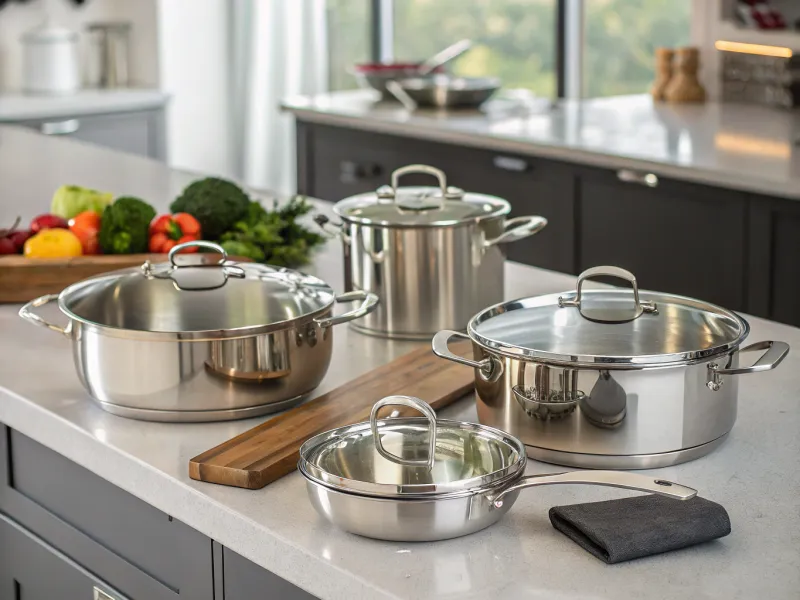
Stainless steel cookware is one of the safest options for healthy cooking. Unlike some non-stick surfaces, it won’t release harmful chemicals when heated to high temperatures. The material distributes heat evenly across the cooking surface, preventing hot spots that can burn food. This even heating helps preserve the natural flavors and nutrients in your ingredients. Cleaning stainless steel is straightforward, and it resists staining and scratching with proper care. Many professional chefs prefer this cookware because it lasts for decades when maintained correctly.
2. Mandoline Slicer
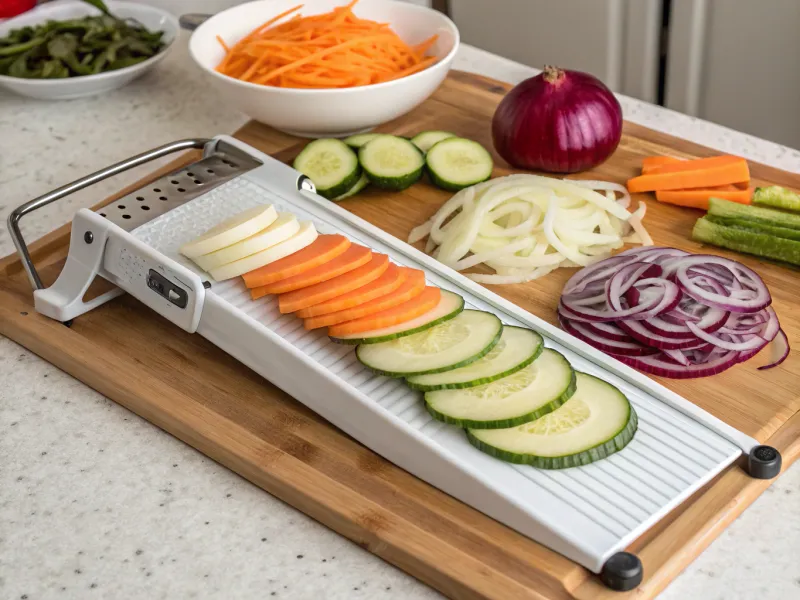
A mandoline slicer cuts vegetables into uniform pieces. This consistency isn’t just about appearance; it ensures all pieces cook at the same rate. When vegetables cook evenly, they retain their texture and nutritional value better. No more overcooked mushy pieces mixed with undercooked crunchy ones in your dishes. The tool encourages you to include more vegetables in your meals because preparation becomes faster and easier. Safety features like hand guards protect your fingers while you work with different thickness settings.
3. Steamer Basket
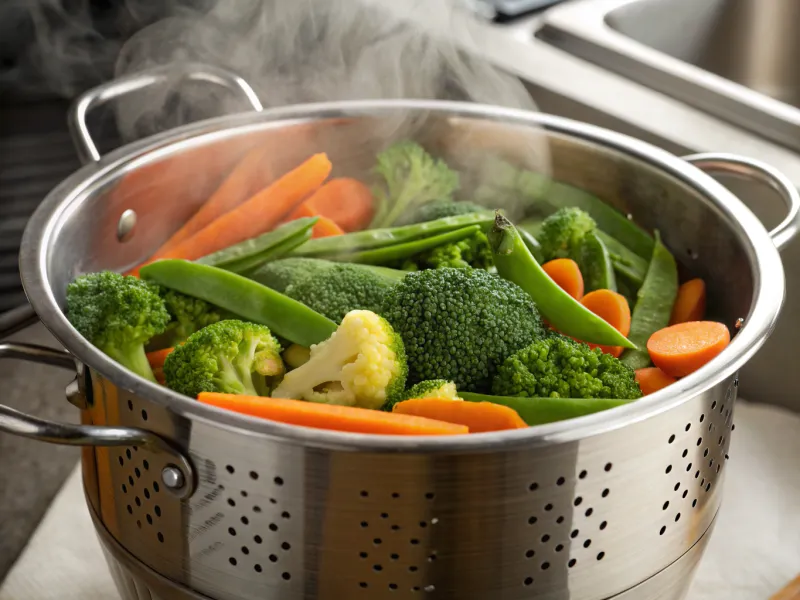
Steaming preserves more water soluble vitamins compared to boiling because vegetables don’t come into direct contact with cooking water. Nutrients stay in the food rather than leaching out. The gentle cooking method maintains vegetable colors, textures, and natural flavors better than other techniques. Steamed vegetables retain their crisp-tender quality that many people find more appealing. No added fats are needed for steaming, making it one of the healthiest cooking methods available. The technique works well for fish, dumplings, and grains in addition to vegetables.
4. Salad Spinner
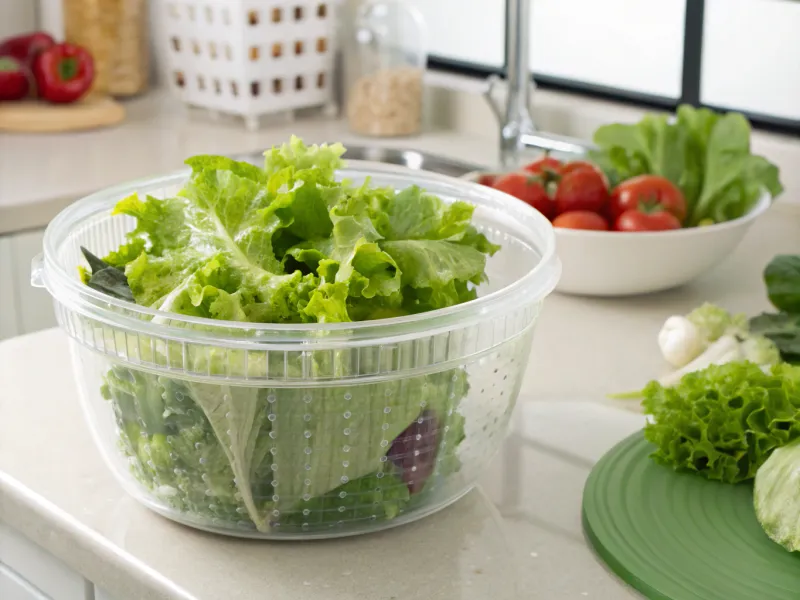
Washing leafy greens thoroughly removes dirt, bacteria, and pesticide residues that can affect both taste and health. A salad spinner makes this process efficient and effective. The spinning action removes excess water without bruising delicate leaves. Dry greens stay fresh longer in the refrigerator and don’t dilute salad dressings. Having clean, ready to eat greens available encourages you to add them to more meals throughout the week. The tool works well for herbs, spinach, lettuce, and other leafy vegetables your family enjoys regularly.
5. Digital Kitchen Scale
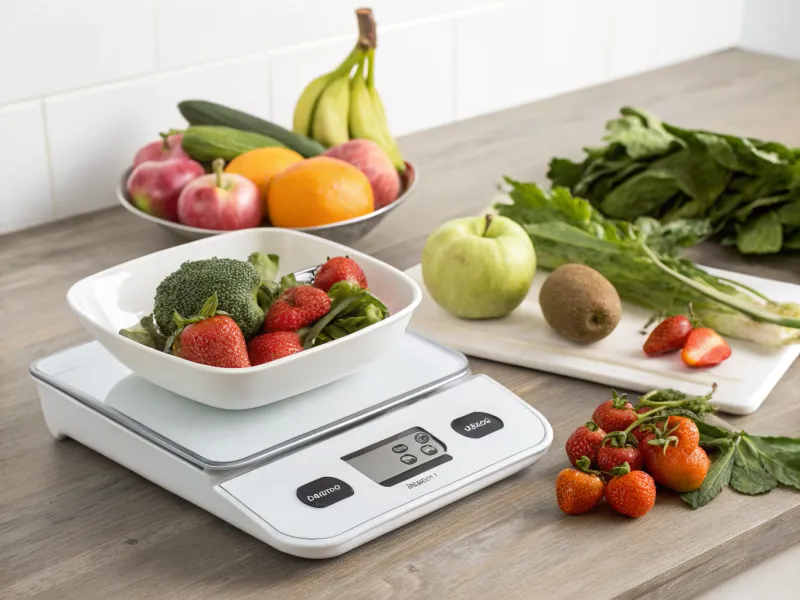
Accurate portion control helps maintain balanced nutrition and prevents overeating. A digital scale measures ingredients precisely, which is especially important for calorie cooking. Many people underestimate portion sizes when eyeballing measurements. Using a scale teaches you what appropriate serving sizes actually look like for different foods. Consistent measurements improve cooking results and help you track nutritional intake more accurately. Baking healthy treats and measuring protein portions becomes more reliable when you use weight rather than volume measurements.
6. Pressure Cooker
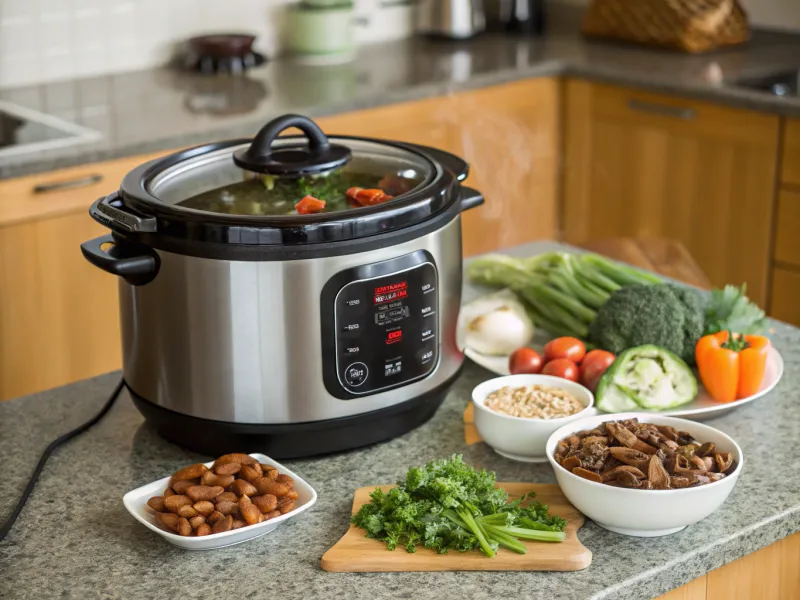
Pressure cookers work by trapping steam inside a sealed pot, which raises the cooking temperature and reduces cooking time significantly. This method helps retain more vitamins and minerals compared to traditional boiling methods. Beans, whole grains, and tough vegetables become tender in a fraction of the usual time. The sealed environment prevents nutrients from escaping with steam or boiling water. Using less water means flavors stay concentrated in your food rather than getting diluted. Many busy families rely on pressure cookers to prepare nutritious meals quickly.
7. Food Processor
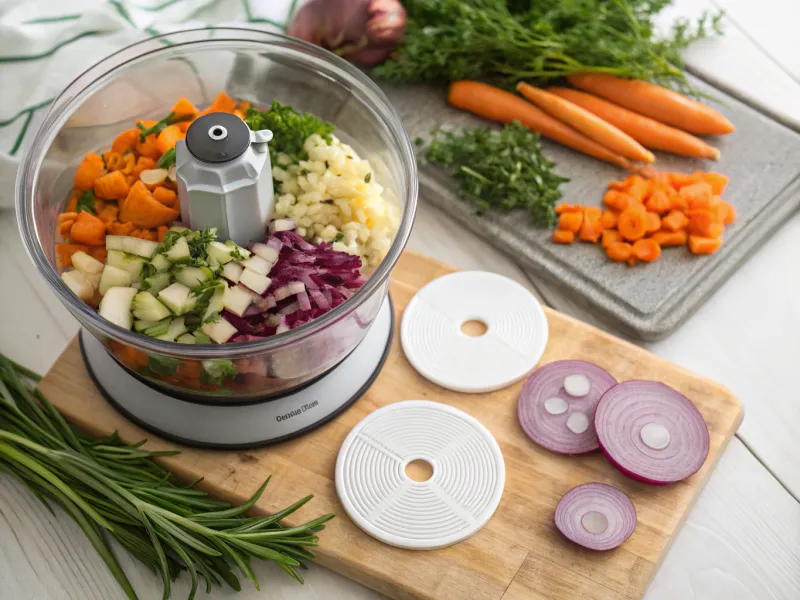
Food processors handle multiple kitchen tasks that would otherwise take considerable time and effort. Chopping, slicing, shredding, and mixing become quick processes. When healthy cooking becomes more convenient, you’re more likely to choose fresh ingredients over processed alternatives. The machine handles tough jobs like making nut butters or chopping large quantities of vegetables. Meal prep becomes manageable when you can process ingredients quickly for the entire week. Many families use food processors to make homemade sauces, dips, and spreads without added preservatives or excess sodium.
8. High Speed Blender
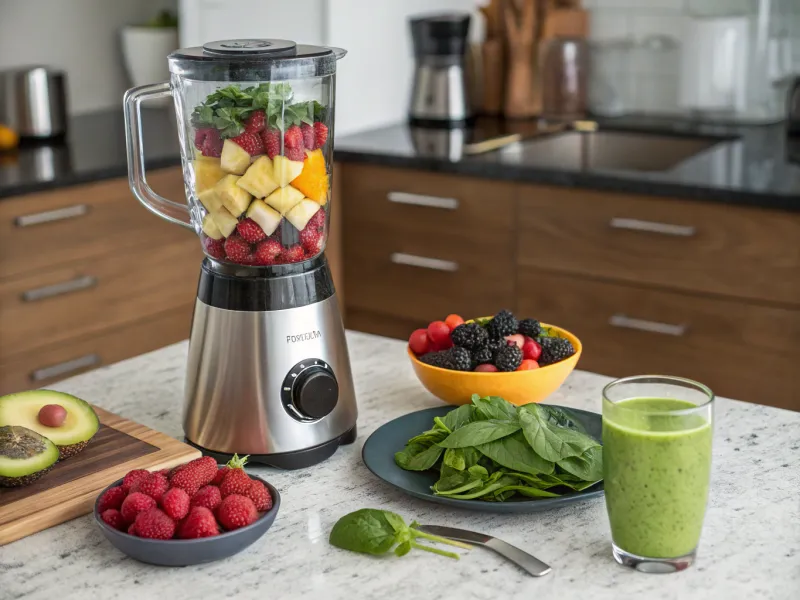
High speed blenders break down tough plant fibers that regular blenders can’t handle effectively. This means you can blend leafy greens, frozen fruits, and nuts into smooth textures. The motor helps you incorporate more vegetables into your diet through smoothies and soups. Spinach, kale, and other nutrient-dense greens become undetectable when blended properly. Making your own smoothies and soups gives you control over ingredients and sugar content. You can avoid preservatives and additives found in store
bought versions while getting more fiber and vitamins.
9. Spiralizer
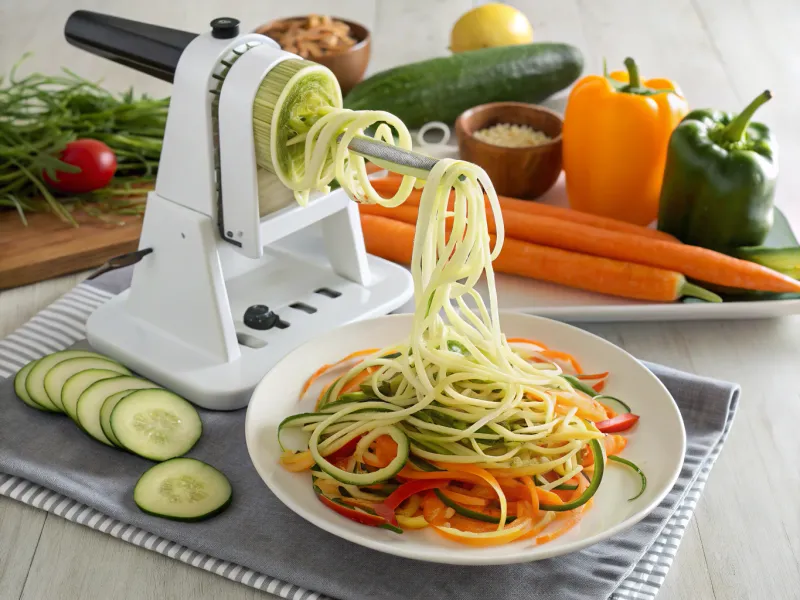
Vegetable noodles provide a lower-carb alternative to traditional pasta while improving your daily vegetable intake. Zucchini, sweet potatoes, and carrots work particularly well for spiralizing. The noodle shape makes vegetables more appealing, especially for children who might resist eating them in other forms. Texture plays a big role in food acceptance and enjoyment. You can use spiralized vegetables raw in salads or cook them briefly to maintain their nutrients and crunch. This tool opens up new possibilities for incorporating more plant based foods into familiar meal formats.
10. Air Fryer
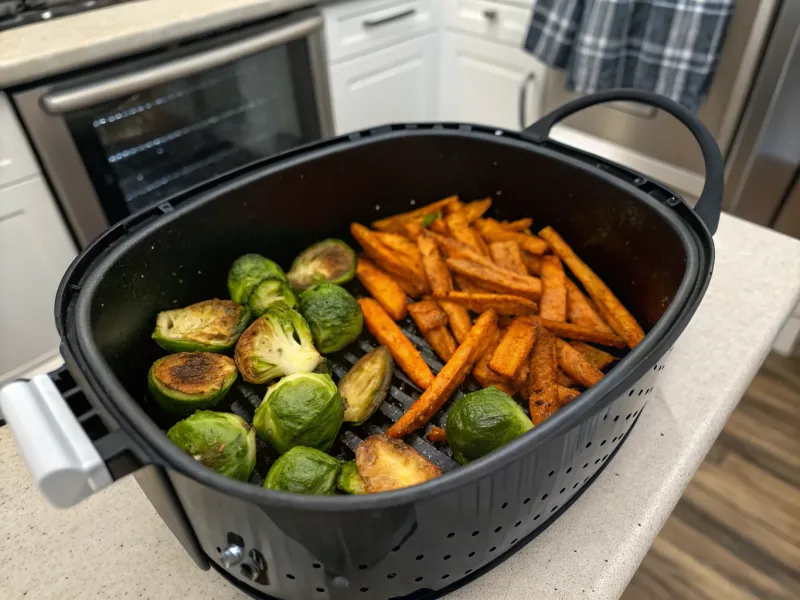
Air fryers circulate hot air around food to add crispy textures without deep frying in oil. This method reduces the amount of added fats in your meals. You can enjoy the taste and texture of fried foods while consuming fewer calories and less saturated fat. Vegetables become crispy and caramelized, making them more appealing to eat. The cooking method works well for proteins like chicken and fish, creating golden exteriors while keeping interiors moist. Cleanup is easier than traditional frying methods, encouraging more frequent use for healthy meal preparation.
11. Sharp Chef’s Knife
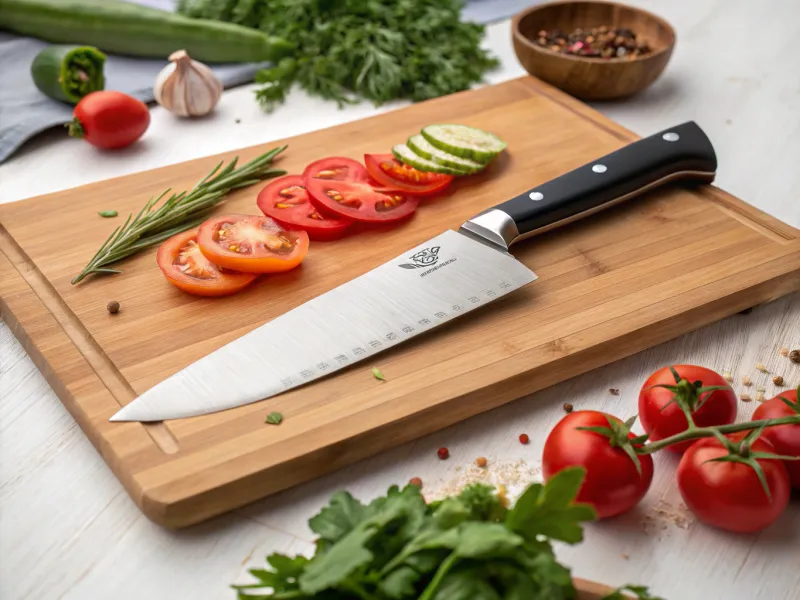
A sharp knife makes vegetable preparation faster and safer, encouraging you to cook with fresh ingredients more often. Dull knives require more pressure and are more likely to slip. Clean cuts preserve cell structure in vegetables, maintaining better texture and reducing nutrient loss. Properly cut ingredients also cook more evenly and look more appealing on the plate. When chopping vegetables becomes quick and easy, you’re more likely to include them in daily meals. A quality knife properly maintained can last longer for many cooking experiences.
